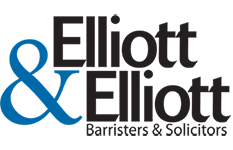When is a Used Residential Property Subject to HST?
It is important to turn your mind to whether a used residential property is subject to HST if that property is larger than a half hectare. Revenue Canada’s definition of a principal residence includes a limit on the land size to a half hectare. This is the amount of land that is usually considered to be reasonably necessary for the use and enjoyment of the building as a place of residence. This is not a firm rule there is room for the land included in the principal residence to be expanded if it can be shown to be reasonably necessary for the use and enjoyment of the building as a residence. For example, the land in excess of the half hectare could be considered reasonably necessary if the location of the buildings on the lot require land in excess of a half hectare to permit access to public roads, or if there is a minimum lot size restriction.
In cases where you are faced with separating the excess land from the residence land for HST purposes the value assigned to each part must be fair and reasonable i.e. based on the fair market value of each portion. Restrictions that would be placed on the excess lands would impact this assessment.
The facts of each situation must be reviewed carefully. The tax treatment by previous owners should also be considered. For the real estate agent drafting the agreement of purchase and sale knowledge of this issue is required. The agreement should be drafted to acknowledge that lands in excess of that reasonably required for the residence may be subject to HST. The apportionment and valuation should be left to the lawyers to sort out.
If you have any questions about this article, I invite you to contact me at shari@elliottlawyers.com.
The content of the articles in this blog are intended to provide a general guide to the subject matter. The information does not constitute legal advice and a solicitor and client relationship is not created.


